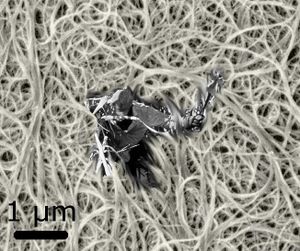
Despite being an extremely active area for patent applications, nanotechnology development is being impaired by current intellectual property law. In contrast to other emerging fields at their times, nanotechnology was born as the Bayh–Dole Act enabled universities to lock down fundamental research effectively preventing open competition. Both technical complexity and bureaucratic mishandling of nanotechnology patent applications have created a dense patent thicket of overlapping claims and rights. This intellectual property tragedy restricts downstream innovation by preventing development of more complex technologies due to exorbitant transaction costs. This article addresses this tragedy with the application of the free and open-source paradigm from software development as open-source methodologies will both accelerate nanotechnology innovation and improve the social return from public investment in nanotechnology research.
Key Points
- Nanotechnology development is being impaired by current intellectual property law.
- Bayh–Dole Act enabled universities to lock down fundamental nanotech research.
- Intellectual property tragedy restricts downstream innovation.
- Open-source paradigm will accelerate nanotechnology innovation.
- Open-source nanotechnology will improve social return from public investment.
See also
- Open source nanotechnology
- Joshua M. Pearce "Make nanotechnology research open-source", Nature 491, pp. 519–521(2012).
- A novel approach to obviousness: An algorithm for identifying prior art concerning 3-D printing materials
- Usman Mushtaq and Joshua M. Pearce “Open Source Appropriate Nanotechnology ” Chapter 9 in editors Donald Maclurcan and Natalia Radywyl, Nanotechnology and Global Sustainability, CRC Press, pp. 191-213, 2012.
- Open-source 3-D printing materials database generator

